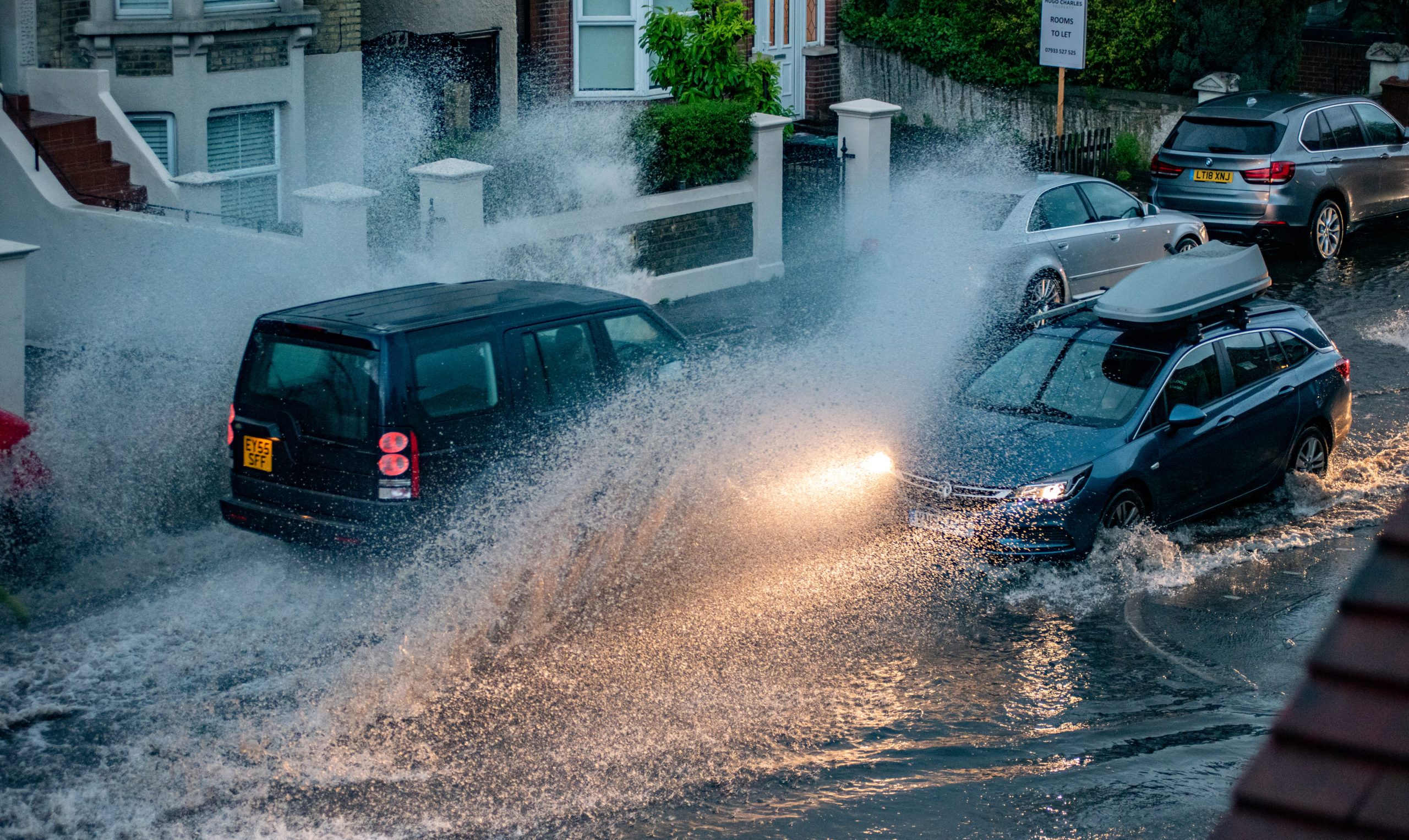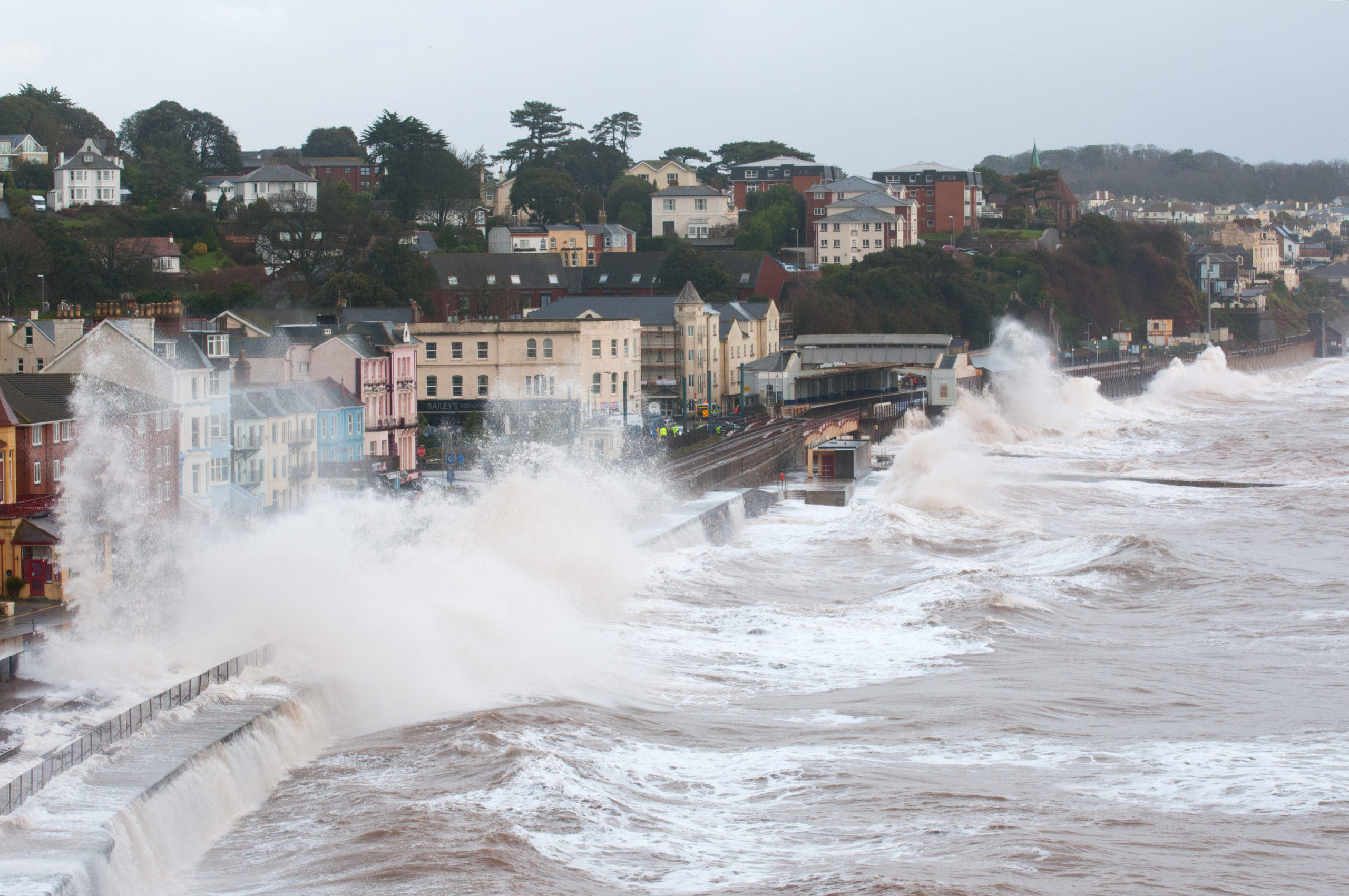

Understanding the Scale of Change
Climate change has been here forever, but we have witnessed a clear acceleration in extreme weather events, driven by human input from greenhouse gas emissions in the last 40 years or so. But what does this mean for UK properties in terms of the future and what are the main drivers of this change?
We have put together analysis from our ClimateIndex™ module to demonstrate the main physical risks that concern lenders and insurers and could affect the value of your client’s property investment.
Surface Flooding
As our atmosphere warms, more moisture is created and provides localised, heavier rain. Over time, the wet areas will get wetter, but these events could happen anywhere with sudden severity. Much of our existing infrastructure, such as sewer pipes and drains, is old and does not have the capacity to deal with a deluge that could back up water into properties alongside direct surface flash flooding.
This presents major issues for homebuyers and owners in making their properties more resilient and needing to invest in measures to mitigate against the risk.
River Flooding
While successive governments have channelled millions of pounds into flood defences to protect priority communities from the river network, this only reduces the risk for those places. Climate change allowances are redrawing the map of flood risk as each major flooding event occurs. Even with this investment, there are thousands of undefended streams that have caused huge damage, with the insurance bill for the 2020 floods alone standing at £375 million.
The tapering off of Flood Re as a support to the most vulnerable and high premiums or excesses for those just outside of this extra support, means there are major considerations for homebuyers and business owners in making their properties more resilient and needing to invest in measures to mitigate against the risk.
Subsidence
As the wetter areas get wetter, so the drier areas get drier. The record breaking 2022 heatwave brought with it a surge in subsidence claims through clay shrink-swell impacts. This is proportionately the greatest risk in the coming century as the ground moves beneath us. Not just from natural causes, but also due to the nationwide legacy of past mining, some of which lies forgotten as a hidden hazard below our houses and businesses.
Shallow, informal workings can give way through both drought and deluge and can have significant impacts on insurance cover and mortgage availability.
Coastal Erosion
Sea levels could rise by as much as 1m in the next century, accelerating coastal erosion in already vulnerable areas. Not everywhere will be protected and funds to defend communities are not infinite.
Whole settlements could be given up to the sea, while many properties may have a shorter lifespan and unable to get insurance or mortgages. Some may walk into a transaction on a cash basis with eyes wide open, but for many they could become trapped and be staring at a total loss on their investment.
The Met Office: The future just got a lot nearer!
At our recent climate change conference, Tyrone Dunbar, Manager Urban Climate Sciences at the Met Office delivered a powerful session on the main drivers of climate change and a scary forecast for 2050 that became all the more real in 2022!

Climate Change and Your Clients
The Law Society issued new guidance for law firms on how to engage with clients on advice about climate risks and there are clear references to the Duty to Warn and Duty to Disclose. For conveyancers, with the availability of climate analysis automatically in our key search reports, we want to make it easier for you.
Clients are also increasingly familiar with climate change and will want to understand if there is a material impact to their investment. For these reasons, we launched our ClimateIndex™ forward climate analysis in summer 2022 to provide simple answers that look forward up to a 30-year period, which covers most mortgage terms and typical occupancy.
It is important to remember that physical climate data is focusing on the same risks in existing environmental searches but projected into the future. It’s the same due diligence backed with the same £10 million PI reliance.
And all available automatically at no extra cost in the environmental search reports listed below:
ClimateIndex™ FAQs
We have produced a detailed and handy guide to ClimateIndex™ by answering some of the typical questions that conveyancers have about the analysis module.
Download







